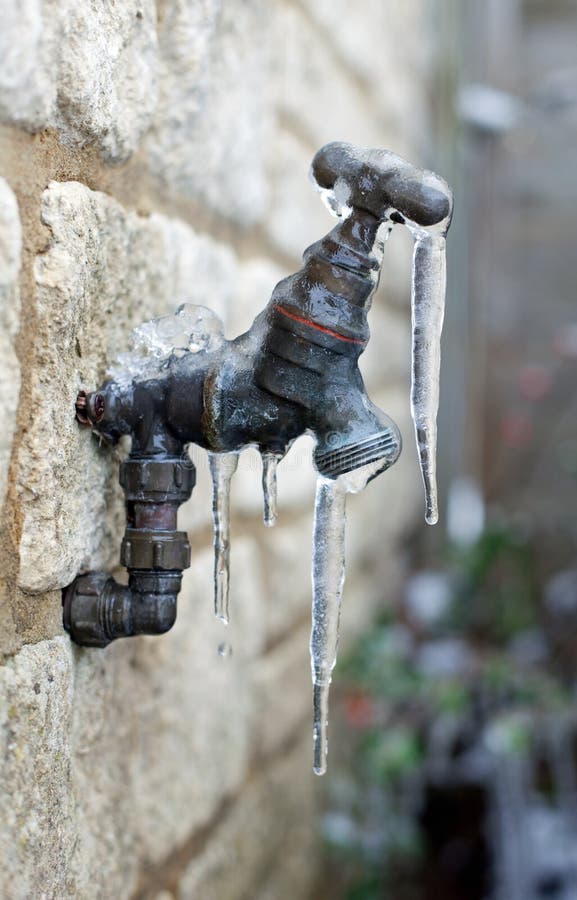Here on the next paragraphs you'll find additional extremely good material about Winter Plumbing Precautions: Preventing Frozen Pipes.

Cold weather can ruin your pipes, particularly by freezing pipes. Right here's exactly how to stop it from happening and what to do if it does.
Intro
As temperatures decline, the danger of frozen pipes boosts, potentially bring about pricey repair services and water damages. Recognizing exactly how to avoid frozen pipes is important for house owners in cold environments.
Recognizing Icy Pipelines
What causes pipelines to ice up?
Pipes freeze when subjected to temperatures below 32 ° F (0 ° C) for prolonged durations. As water inside the pipelines ices up, it expands, taxing the pipe wall surfaces and potentially creating them to burst.
Dangers and problems
Frozen pipes can bring about water disruptions, residential property damage, and pricey repair work. Ruptured pipes can flooding homes and trigger comprehensive architectural damages.
Indications of Frozen Pipes
Determining icy pipes early can stop them from rupturing.
Exactly how to recognize frozen pipes
Search for lowered water circulation from faucets, unusual odors or noises from pipelines, and visible frost on revealed pipelines.
Prevention Tips
Shielding vulnerable pipes
Cover pipes in insulation sleeves or use warm tape to safeguard them from freezing temperatures. Focus on pipes in unheated or exterior locations of the home.
Home heating strategies
Keep indoor spaces appropriately heated up, particularly areas with plumbing. Open up cabinet doors to permit warm air to distribute around pipelines under sinks.
Protecting Exterior Plumbing
Garden hose pipes and outside faucets
Separate and drain yard pipes before winter. Install frost-proof spigots or cover outdoor faucets with insulated caps.
What to Do If Your Pipelines Freeze
Immediate actions to take
If you believe icy pipelines, keep taps open up to soothe stress as the ice melts. Make use of a hairdryer or towels soaked in warm water to thaw pipes gradually.
Long-Term Solutions
Structural modifications
Consider rerouting pipelines far from outside wall surfaces or unheated locations. Add extra insulation to attic rooms, basements, and crawl spaces.
Upgrading insulation
Buy high-grade insulation for pipelines, attics, and walls. Correct insulation assists preserve consistent temperature levels and decreases the risk of icy pipes.
Verdict
Stopping icy pipes requires positive measures and quick actions. By understanding the causes, signs, and safety nets, homeowners can secure their pipes during cold weather.
5 Ways to Prevent Frozen Pipes
Drain Outdoor Faucets and Disconnect Hoses
First, close the shut-off valve that controls the flow of water in the pipe to your outdoor faucet. Then, head outside to disconnect and drain your hose and open the outdoor faucet to allow the water to completely drain out of the line. Turn off the faucet when done. Finally, head back to the shut-off valve and drain the remaining water inside the pipe into a bucket or container. Additionally, if you have a home irrigation system, you should consider hiring an expert to clear the system of water each year.
Insulate Pipes
One of the best and most cost-effective methods for preventing frozen water pipes is to wrap your pipes with insulation. This is especially important for areas in your home that aren’t exposed to heat, such as an attic. We suggest using foam sleeves, which can typically be found at your local hardware store.
Keep Heat Running at 65
Your pipes are located inside your walls, and the temperature there is much colder than the rest of the house. To prevent your pipes from freezing, The Insurance Information Institute suggests that you keep your home heated to at least 65 degrees, even when traveling. You may want to invest in smart devices that can keep an eye on the temperature in your home while you’re away.
Leave Water Dripping
Moving water — even a small trickle — can prevent ice from forming inside your pipes. When freezing temps are imminent, start a drip of water from all faucets that serve exposed pipes. Leaving a few faucets running will also help relieve pressure inside the pipes and help prevent a rupture if the water inside freezes.
Open Cupboard Doors
Warm your kitchen and bathroom pipes by opening cupboards and vanities. You should also leave your interior doors ajar to help warm air circulate evenly throughout your home.

We were made aware of that editorial on How To Avoid Freezing Pipes through an associate on another web blog. Those who enjoyed our blog entry please make sure you remember to pass it around. I am grateful for your time. Kindly check our blog back soon.
Click Here